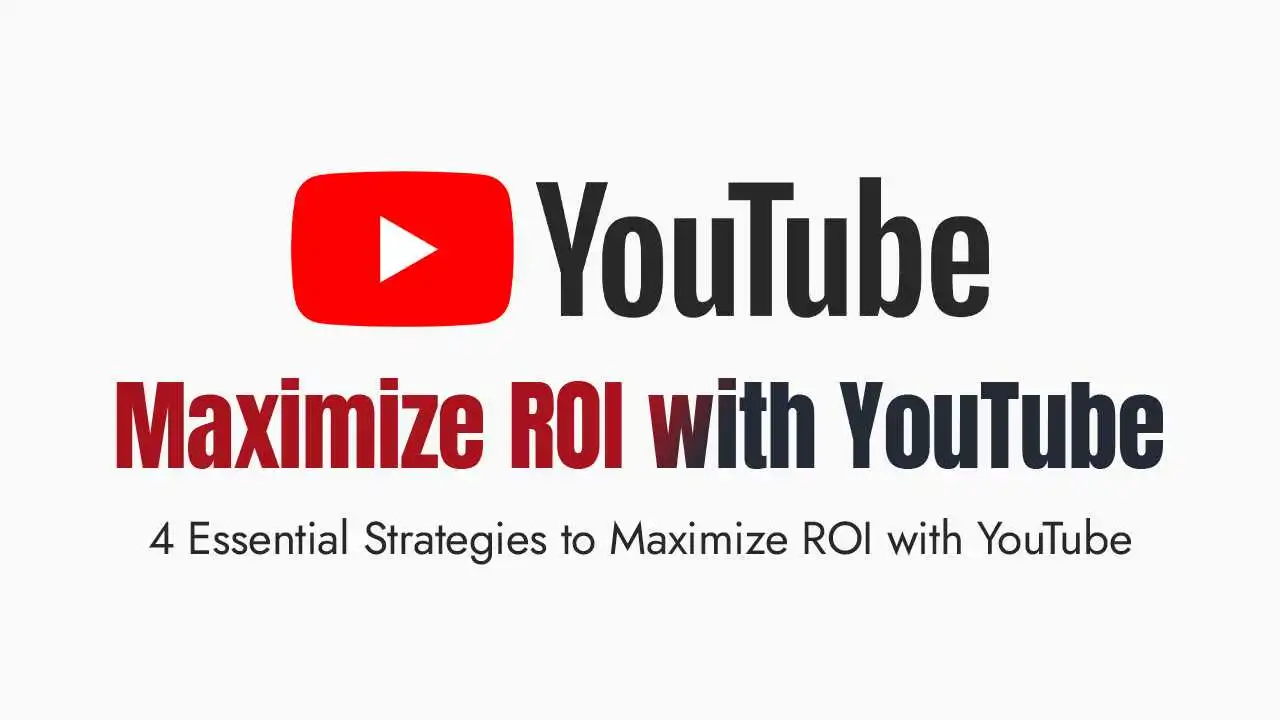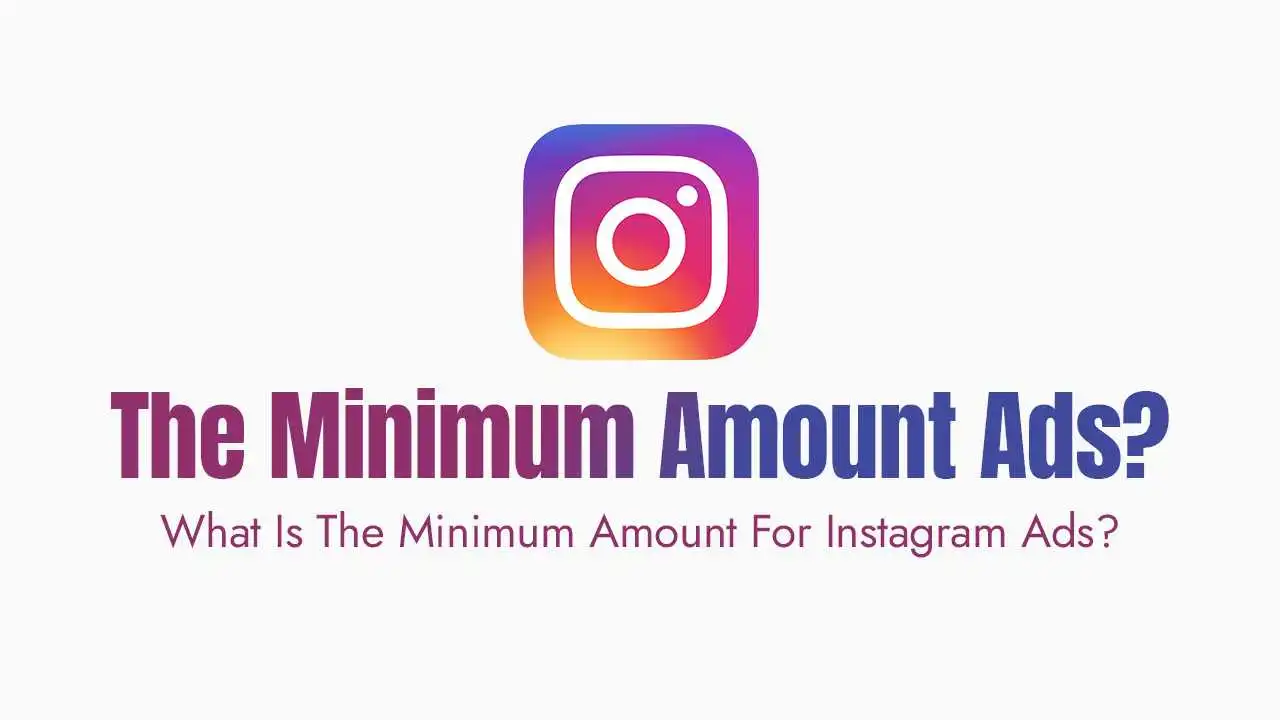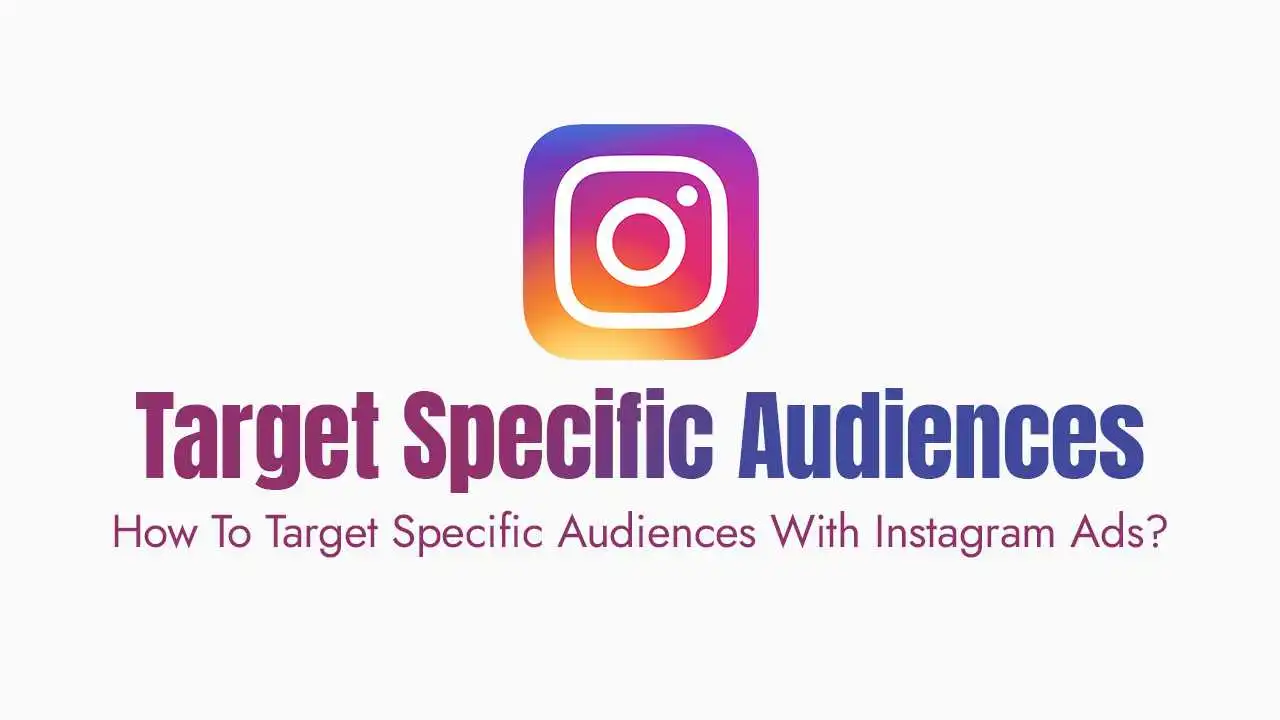For years, digital marketers and small business owners (SMBs) faced a painful dilemma in influencer marketing: traditional creator sponsorships felt like an expensive gamble.
You paid a single, lump sum, but had no clear way to measure if the investment actually worked, leaving massive uncertainty
The rules have officially been rewritten.
YouTube’s new Dynamic Ad Insertion (DAI) capability transforms how brands advertise. By allowing real, swappable ad slots within creator content—operating exactly like a modern TV network—DAI offers the precise measurement, targeting, and guaranteed results previously impossible in the creator economy.
This is the new superpower for smart brands. Read on to learn the four critical strategies your business must implement immediately to capitalize on this shift and achieve measurable campaign results.
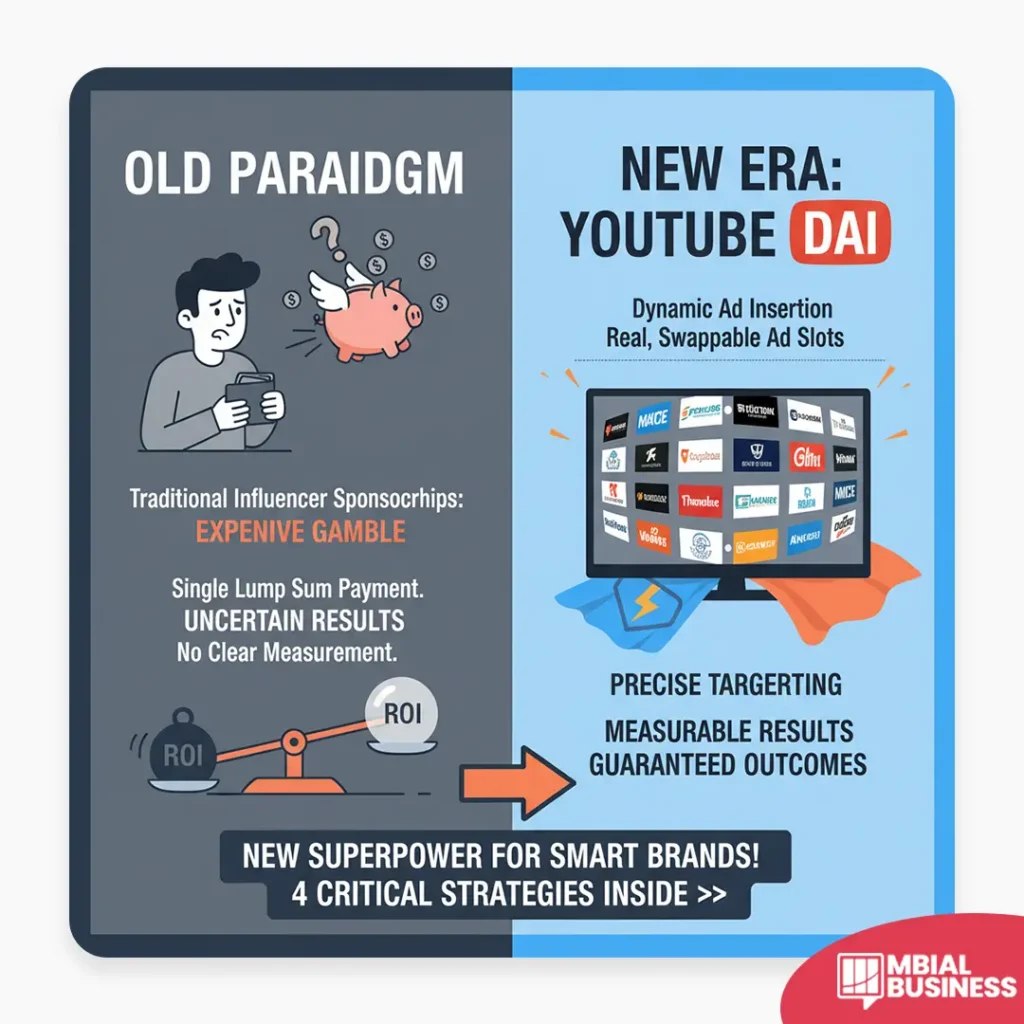
Guaranteeing Reach and Reducing Risk
Under the old system, brands often put all their budget behind one creator and hoped the video would go viral. DAI removes this high-stakes risk.
The Actionable Strategy:
Adopt a portfolio approach by spreading your budget across 20 or more relevant creators and optimizing your spend based strictly on performance. You are moving from a lump-sum gamble to a guaranteed media buy
Why It Works (The ROI):
You pay for real, measurable results. If a video underperforms, you are not locked into overpaying. You pay based on the exact impressions delivered, ensuring maximum budget efficiency
Example/Case Study:
Instead of paying a creator $20,000 up front, you might agree to purchase 100,000 guaranteed impressions at a set CPM (cost per thousand impressions), such as $2,500 at a $25 CPM
If the video only delivers 50,000 impressions, you only pay half, eliminating the traditional risk of missed reach
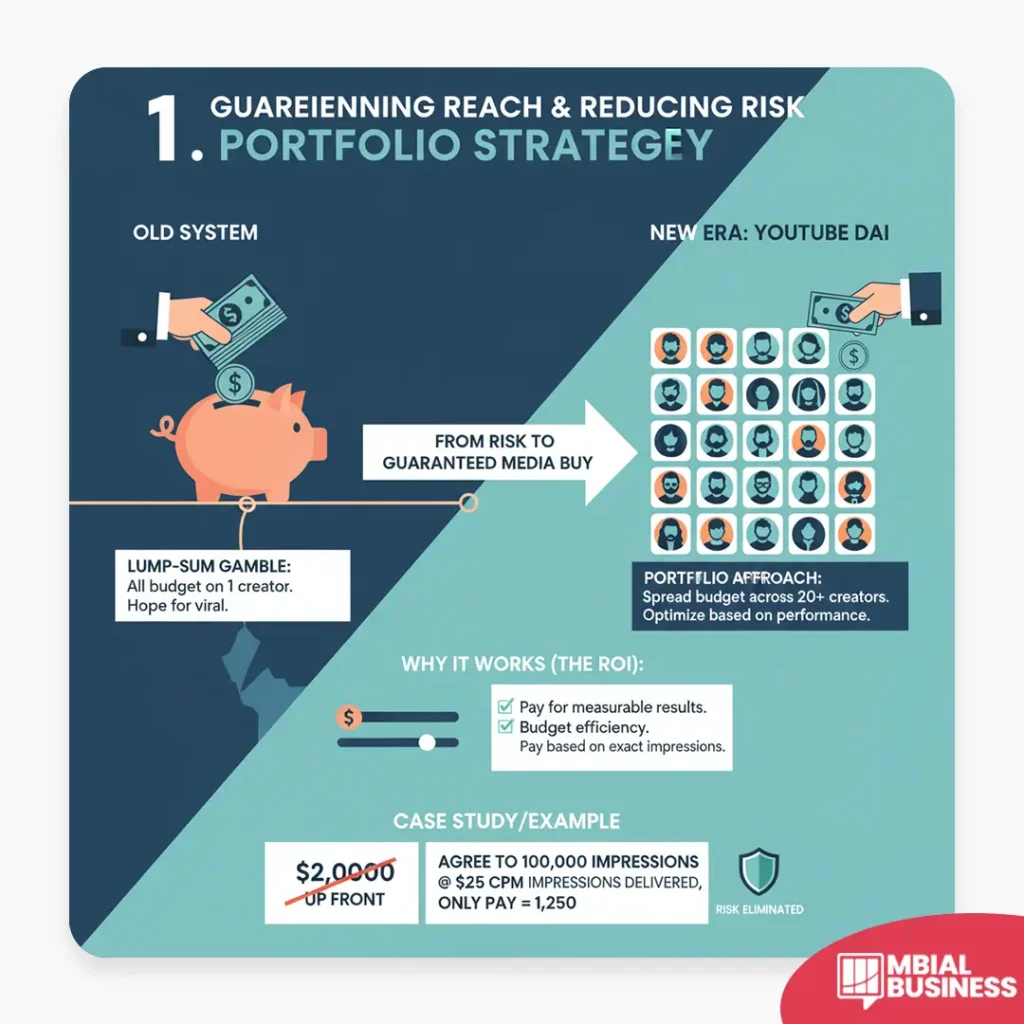
Activate A/B Testing for Optimization:
Dynamic Ad Insertion provides a testing paradise that was previously unavailable in creator partnerships:
The Actionable Strategy:
Use the swappable nature of DAI slots to aggressively test ad creatives and messaging.
You can create two different 30-second ads and test them simultaneously within the same creator’s video slots to see which resonates best.
You can also leverage geographic differences, running a specific ad for a US audience versus a different ad for a UK audience within the exact same content.
Why It Works (The ROI):
This programmatic testing ability allows you to quickly identify your highest-converting messaging and optimize your campaigns on the fly.
Furthermore, because YouTube offers precise measurement, you gain the data necessary to fine-tune your targeting and drive higher conversions.
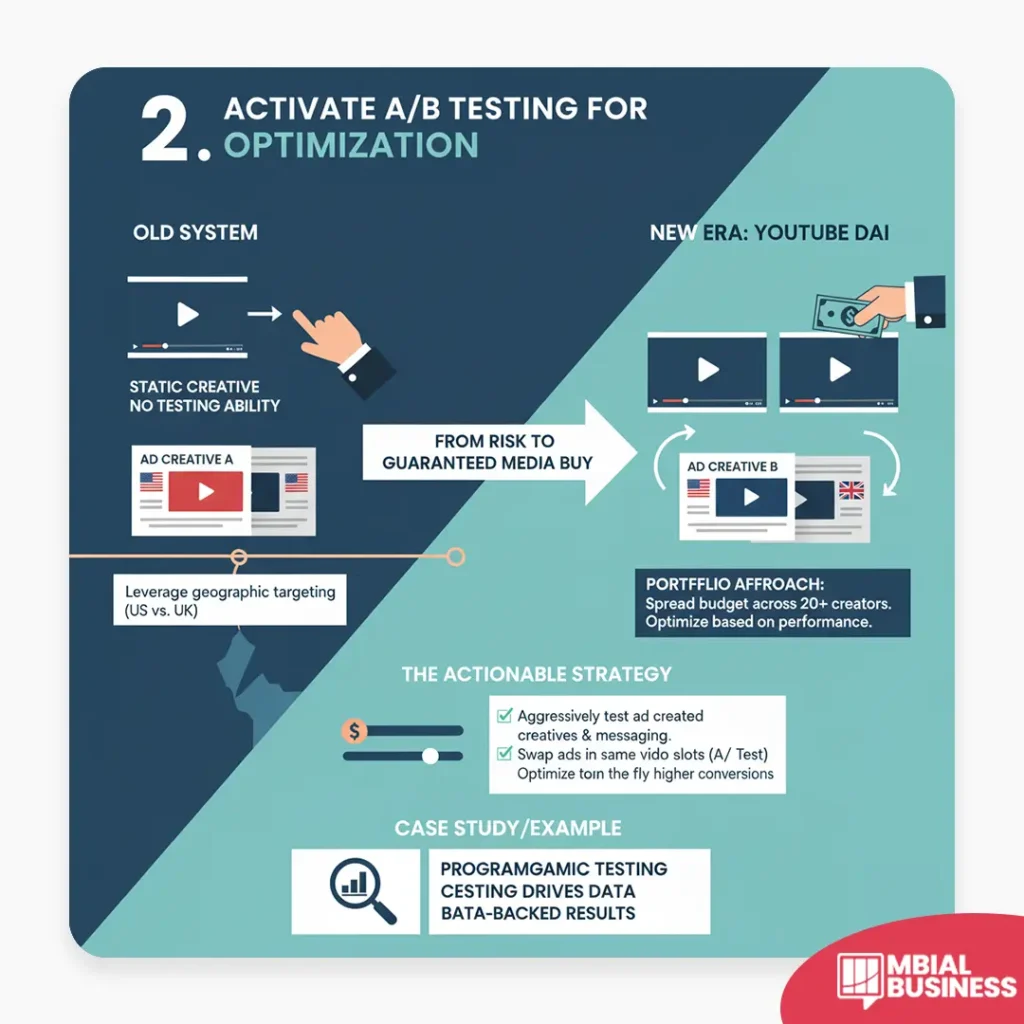
Master Hyper-Targeted Audience Segmentation:
Dynamic Ad Insertion allows brands to target segments within a creator’s audience, moving beyond general demographics.
The Actionable Strategy:
When partnering with a creator, analyze how their audience breaks down into different segments (e.g., a finance creator might appeal to young investors, retirement planners, and small business founders).
Then, design different ad creatives tailored to each segment and serve them dynamically based on viewing patterns.
Why It Works (The ROI):
This level of segmentation ensures that audiences receive more relevant ads instead of random commercials.
Relevancy directly boosts engagement and conversion rates, maximizing the value of every impression purchased.
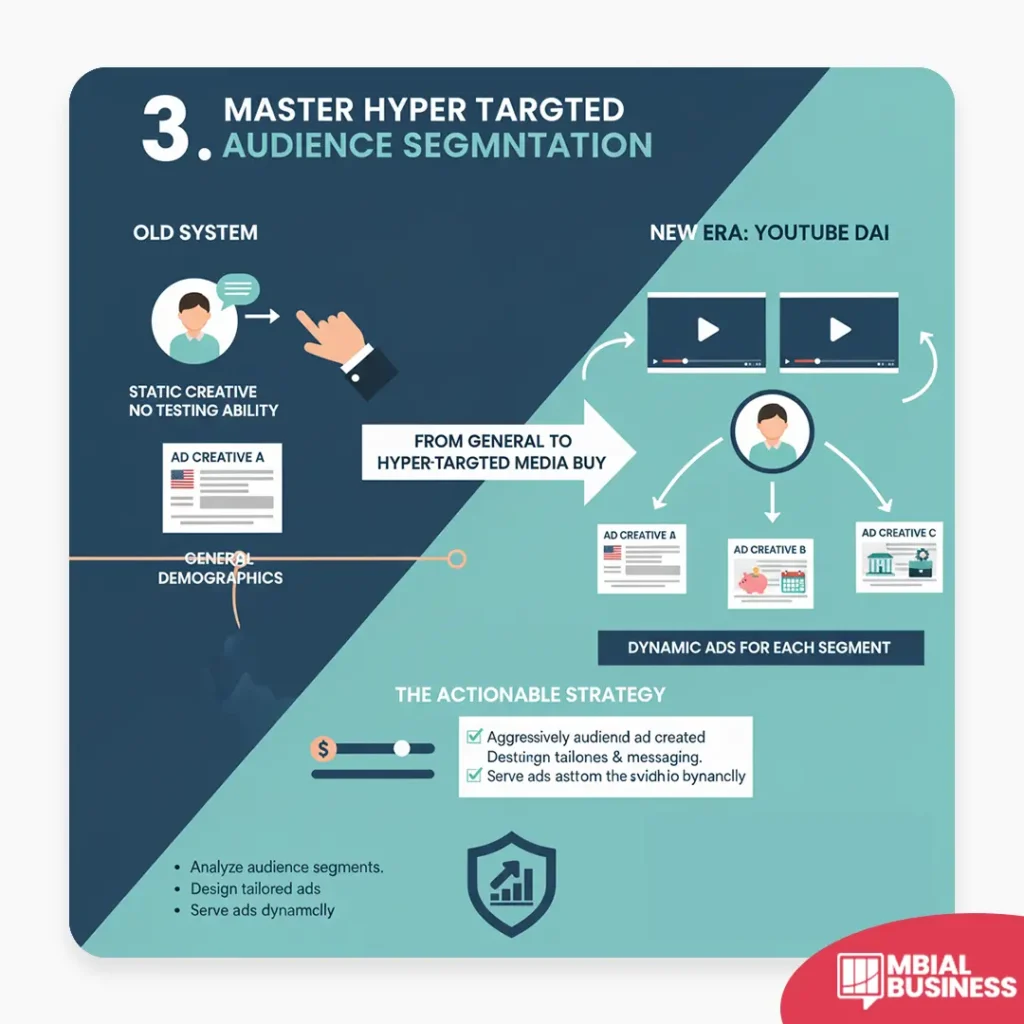
Transition to Media Buying:
Stop treating creators like one-off freelancers; they are now individual TV networks with measurable inventory.
The Actionable Strategy:
Shift your thinking from “project-based” deals to long-term “media buys”. Identify creators who have strong back catalogs of “evergreen videos”—content that still gets consistent views years after publication.
Instead of a one-time sponsorship, propose an ongoing partnership where you buy recurring access.
Why It Works (The ROI):
You secure continuous access to highly engaged, hard-to-reach audiences. By buying access to the creator’s entire back catalog (which suddenly becomes sellable inventory), you maximize your brand’s presence, guaranteeing hundreds of thousands of annual impressions from videos that continue to generate traffic.
Example/Case Study:
Instead of a single video sponsorship, ask the creator, “I want to buy 500,000 impressions across your entire content catalog over the next six months, and we will optimize based on conversions”.
This mirrors the effective, ongoing advertising models used by traditional networks like NBC.
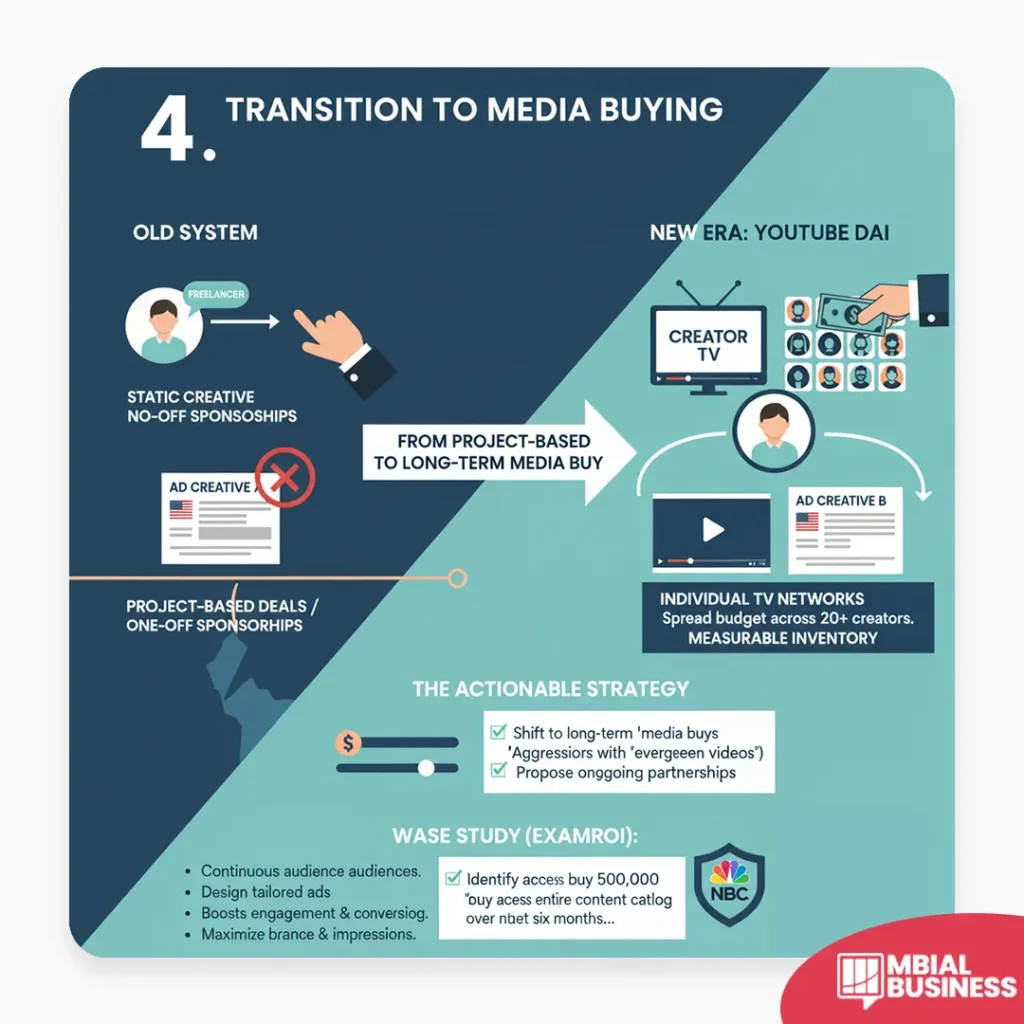
Actionable Takeaways / Summary
Stop Gambling:
Pay for advertising based on real, guaranteed, and measurable impressions rather than expensive lump-sum, one-off sponsorships.
Audit Inventory:
Identify creators who possess strong back catalogs of evergreen videos, as these older videos now represent highly valuable, quantifiable advertising inventory.
Think Programmatic:
Approach creator partnerships with a portfolio mindset, spreading budget across multiple channels and leveraging DAI for advanced A/B testing and performance optimization.
Plan Ahead:
Testing for dynamic ad insertion begins in late 2025, with a full rollout expected in 2026. Start structuring your deals now to mirror what is coming so you lock in the best partnerships before competitors recognize this opportunity.
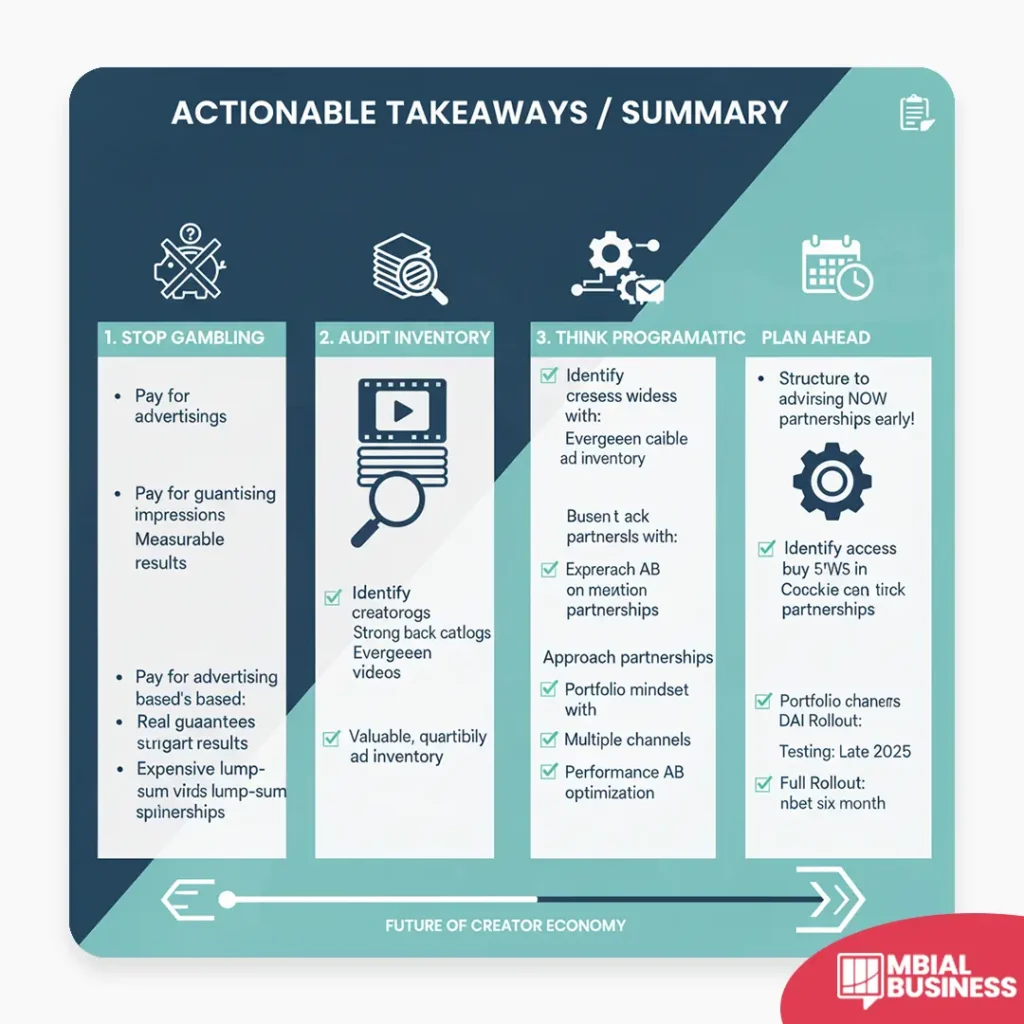
Conclusion:
The shift to Dynamic Ad Insertion represents the biggest wealth transfer in media history, moving billions in advertising spend from shrinking traditional TV viewership to measurable digital platforms with younger, more engaged audiences.
Smart marketers must stop thinking about creator partnerships incorrectly and start treating creators as the profitable media networks they now are.
Start A/B testing this strategy today by identifying three potential media partners and structuring dynamic, outcome-driven deal proposals.
FAQs: How to Hide Your Followers on Instagram
1. what is dynamic ad insertion (dai) and how is it different from traditional youtube sponsorships?
Dynamic Ad Insertion (DAI) is a technology that allows advertisers to programmatically insert, replace, and remove ad segments within a video after it has been published, similar to how modern TV networks operate. This fundamentally differs from traditional YouTube sponsorships, where a brand’s message or product mention is permanently “baked into” the video content for the life of the video. With the traditional model, the creator is paid a fixed, lump sum up front, regardless of how the video performs over time. DAI, conversely, allows brands to purchase guaranteed impressions and ensures they only pay for the actual, measurable reach delivered, transforming a one-off gamble into a guaranteed media buy.
2. how does dai reduce financial risk for brands?
DAI significantly reduces financial risk by shifting the advertiser’s mindset from a lump-sum, high-stakes gamble to a guaranteed media buy. Under the old system, if a sponsored video underperformed, the brand had already overpaid for the reach they received. With DAI, a brand purchases a set number of guaranteed impressions (e.g., 100,000 views at a set cost per thousand or CPM). If the video only delivers a fraction of those impressions, the brand only pays for what was actually delivered, eliminating the traditional risk of missed reach and ensuring maximum budget efficiency based on real, measurable results.
3. what are the key benefits of using dai for a/b testing?
Dynamic Ad Insertion creates a testing paradise for advertisers by allowing ad creatives and messaging to be dynamically swapped within the same creator’s video slots. This means a brand can create two different ad versions and simultaneously test them on the same audience to determine which creative or call-to-action resonates best. Furthermore, this capability extends to geographic targeting, allowing an ad tailored for a US audience to be served dynamically within the same video where a different ad is served to a UK audience. This programmatic testing capability quickly identifies the highest-converting messaging, enabling on-the-fly campaign optimization.
4. what is an "evergreen video" and why is it valuable under the new dai model?
An evergreen video is content that stays relevant and valuable over an extended period, as it is not tied to fleeting trends, current events, or viral moments. Examples include “how-to” guides, tutorials, foundational explainer videos, or timeless reviews. Under the new DAI model, evergreen videos become highly valuable advertising inventory because they continue to generate consistent, searchable traffic and views for years after publication. This allows brands to shift from one-time sponsorships to continuous, long-term media buys across a creator’s entire back catalog, guaranteeing sustained exposure to highly engaged audiences.
5. how should small businesses (smbs) change their approach to working with creators?
Small businesses must transition their mindset from treating creators as one-off freelancers to viewing them as measurable media networks. The new actionable strategy is to move away from project-based lump-sum deals and instead propose long-term media buying partnerships. This involves spreading the advertising budget across a portfolio of multiple creators and buying recurring access to their content catalog, rather than just one video. This approach, which mirrors effective traditional advertising, ensures continuous brand presence and allows the SMB to optimize their spend strictly based on conversion and impression performance data.

